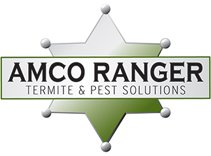How To Remove Wasp Nests
First of all, removing wasp nests can be very dangerous. It is strongly recommended that you hire an experienced professional to do the job for you. If you decide to attempt it yourself, first ensure you are not allergic to wasp stings by setting up an allergy test with your doctor.
If you decide to remove a nest yourself, make sure that you wear protective clothing at all times, including long pants, socks, boots, a hooded sweatshirt with the hood pulled over your head, gloves, and protective goggles or glasses. It’s also important to plan an obstacle-free escape route should the wasps decide to swarm.
Plain soap and water
An eco-friendly way to remove wasps that have already housed themselves on your property is to use plain soap and water. Add two tablespoons of dish soap to a spray bottle filled with water, and spray away, directing it at small hanging nests. Experts say the soap works to clog their breathing spores and they die almost instantly. This works well with small nests. For large nests, which can contain thousands of wasps, hire a professional.
Drown Aerial Nests
You can also get rid of aerial nests and their wasps by drowning them, but it’s important to be sure you aren’t allergic to them first, as this method comes with some risk of getting stung. If you have an allergy, a sting can be life threatening, so hire a professional. Also keep in mind that this is a job that’s best done at night because that’s when the wasps are least active, so their reaction time is slower, and they are less aggressive. Use a red or amber colored light for safe visibility, as standard flashlights will attract wasps to you.
Carefully place a cloth bag over the entire nest, and then quickly tie it off at the top. As you draw in the tie, pull the nest free and the bag should be well sealed. Then place the bag in a bucket of water and cover with a large rock, so that it stays totally submerged. If you have wasp nests in the walls or your home, or underground, it’s best to turn to a professional.
Smoke them out
Another option, which also calls for the protective measures mentioned above, is to use smoke. You can light a fire in a grill just below the nest. The smoke will rise up and seep into the nest, where it will suffocate the wasps and force them to evacuate. Allow the smoke to rise for an hour or two, and when you’re 100% certain the nest is empty, put the fire out and then knock the nest down using a broom or other long object. It’s a good idea to keep a spray bottle filled with dish soap and water nearby so you can use it to fend off any live wasps that might remain.
This technique only works on aerial nests that are hanging from tree branches or other exposed areas. Don’t use it on nests that are anywhere near your home, such as in doorways or under eaves, as you could accidentally set your house on fire.
We can help
No matter how intimidating or pervasive your wasp problem, you can trust that Amco Ranger knows exactly how to handle it and make sure they don’t return. Give us a call today if you need help getting rid of wasps at your home or business in Cottleville, St. Peters, O’Fallon, St. Charles, St. Louis, and surrounding communities.
Don’t want wasps around you in the first place? Find out how you can keep wasps away.
